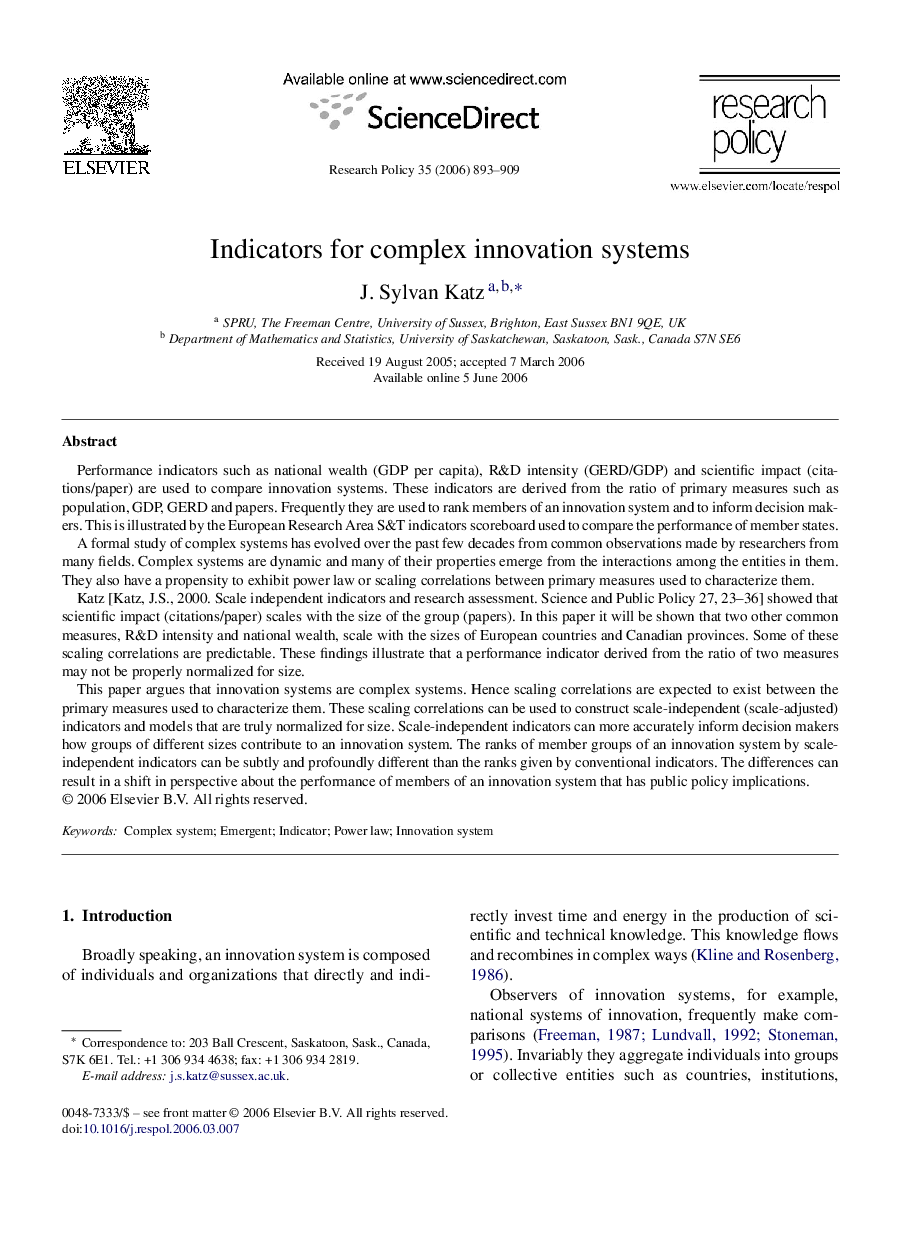| Article ID | Journal | Published Year | Pages | File Type |
|---|---|---|---|---|
| 985308 | Research Policy | 2006 | 17 Pages |
Performance indicators such as national wealth (GDP per capita), R&D intensity (GERD/GDP) and scientific impact (citations/paper) are used to compare innovation systems. These indicators are derived from the ratio of primary measures such as population, GDP, GERD and papers. Frequently they are used to rank members of an innovation system and to inform decision makers. This is illustrated by the European Research Area S&T indicators scoreboard used to compare the performance of member states.A formal study of complex systems has evolved over the past few decades from common observations made by researchers from many fields. Complex systems are dynamic and many of their properties emerge from the interactions among the entities in them. They also have a propensity to exhibit power law or scaling correlations between primary measures used to characterize them.Katz [Katz, J.S., 2000. Scale independent indicators and research assessment. Science and Public Policy 27, 23–36] showed that scientific impact (citations/paper) scales with the size of the group (papers). In this paper it will be shown that two other common measures, R&D intensity and national wealth, scale with the sizes of European countries and Canadian provinces. Some of these scaling correlations are predictable. These findings illustrate that a performance indicator derived from the ratio of two measures may not be properly normalized for size.This paper argues that innovation systems are complex systems. Hence scaling correlations are expected to exist between the primary measures used to characterize them. These scaling correlations can be used to construct scale-independent (scale-adjusted) indicators and models that are truly normalized for size. Scale-independent indicators can more accurately inform decision makers how groups of different sizes contribute to an innovation system. The ranks of member groups of an innovation system by scale-independent indicators can be subtly and profoundly different than the ranks given by conventional indicators. The differences can result in a shift in perspective about the performance of members of an innovation system that has public policy implications.
